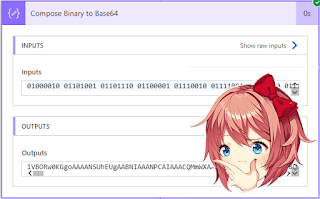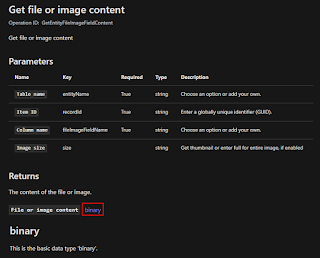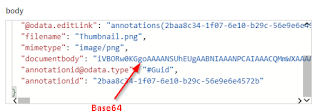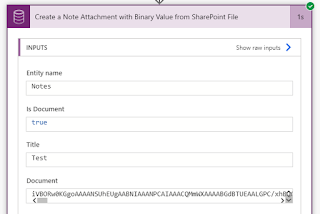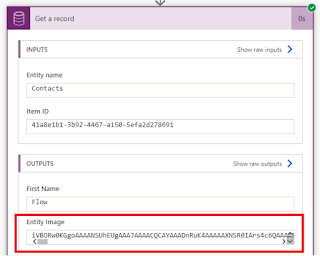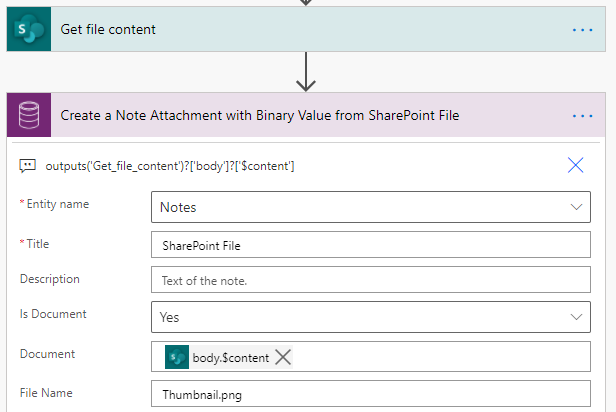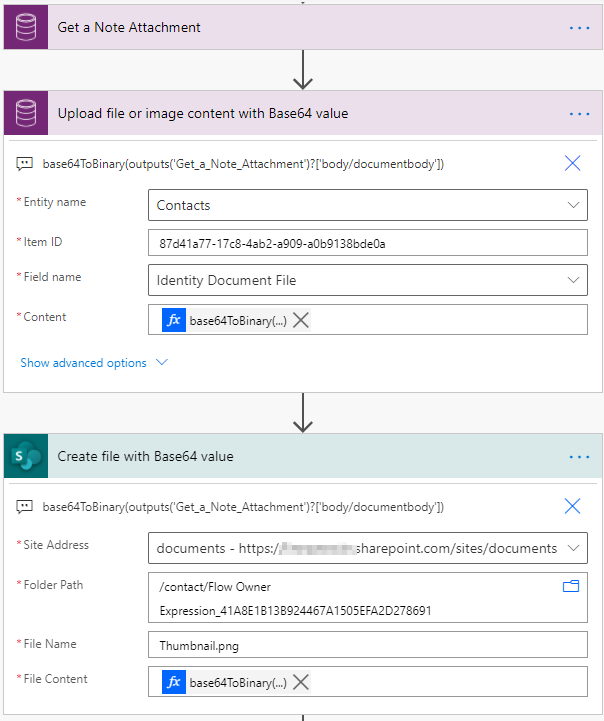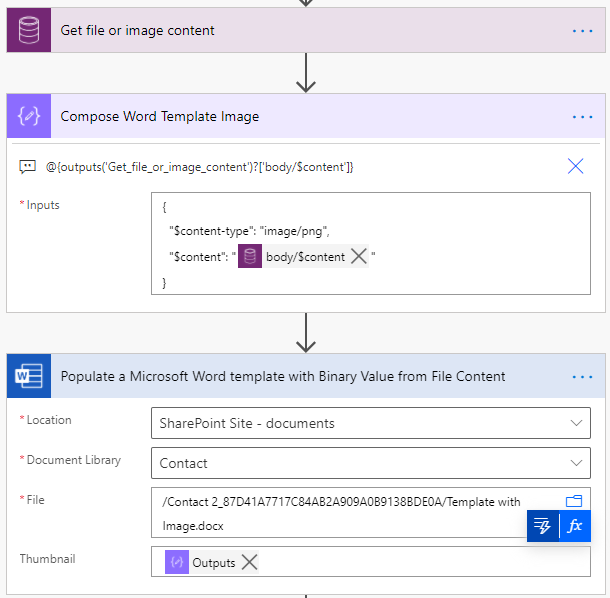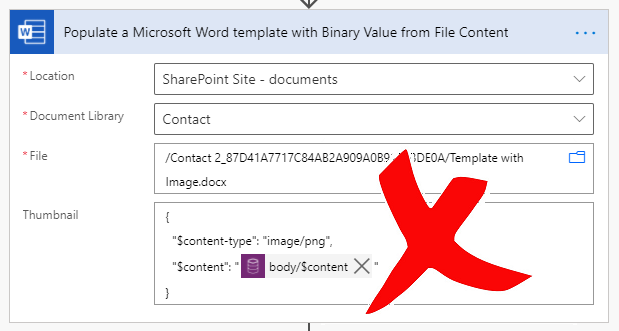Handle Base64 and Binary File Content Types in Power Automate

Identification
🔗 Binary
🔗 Base64
{ "$content-type": "image/png", "$content": "iVBORw0KG...i/DhQmCC" }
Conversion
🔗 Create Note Attachment from SharePoint File
Get file content action will return the SharePoint file content in Binary but creating a Note attachment requires Base64 value. Using the ['$content'] property of the output with the following expression will populate with Base64 value to the Document column.outputs('Get_file_content')?['body']?['$content']
Upload File with Binary Data
To upload the Binary data (e.g. documentbody column value of the Note attachment) to SharePoint or File data type column, base64ToBinary function can be used.base64ToBinary(outputs('Get_a_Note_Attachment')?['body/documentbody'])
Populate Word Template Image
To construct the file content for the image placeholder in the Word template with the Binary data type, ['$content'] property can be used as in the following expression.outputs('Get_file_or_image_content')?['body/$content']
Compose action step is required to construct the input for the image content using the Base64 value and populate the output of the Compose step to the image placeholder. If the content JSON is directly populated, the step will fail with the following error.
Summary
Published on:
Learn moreRelated posts
Input and Output Parameters for Child Flows in Power Automate
In this post, I will look at the input and output parameter types for child flows. Recently I hit a couple of small issues with the various d...
5 fundamental Power Automate ideas that will make your flows better!
It's time to have a look at some of my older posts. In this post I'm going to have another look at these Power Automate ideas. Back in 2017/20...
Replace the Excel Online connector with the Microsoft Graph API in Power Automate
If you have worked with the Excel Online connector in Power Automate then you will most likely know the pains of this connector. In this post ...
How to Automate Formula Writing in Power Automate Using Copilot
As developers, we use Power Automate to handle everyday tasks and automate small parts of our work. Flows help reduce manual effort, improve a...
Data Retention Strategy in Power Pages – Automated Archival with Scheduled Power Automate Jobs
As Power Pages portals scale, the amount of data they generate grows exponentially—form submissions, bookings, cases, applications, event regi...
From Business Central to SharePoint: The Right Way to Save PDF Files in Power Automate
If you’re pulling PDF files from Microsoft Dynamics 365 Business Central and saving them to SharePoint using Power Automate, there’s one criti...
How to Build Environment-Aware Flows by Fetching CRM Metadata Dynamically in Power Automate
Stop relying on OData workarounds and use a professional API-based pattern instead. When building flows in Power Automate, you often need envi...
Action ‘Update_a_record’ failed: An error has occurred. No resources were found when selecting for update – Fixing Cross-Company Update Issues in Finance & Operations Using Dataverse Virtual Entities (Power Automate)
Recently, while trying to update the Projects table in Finance & Operations using the Fin & Ops Apps actions in Power Automate, we ran...
